Research Results
1. A new study cracks the code to increasing grain size and reducing chalkiness in rice
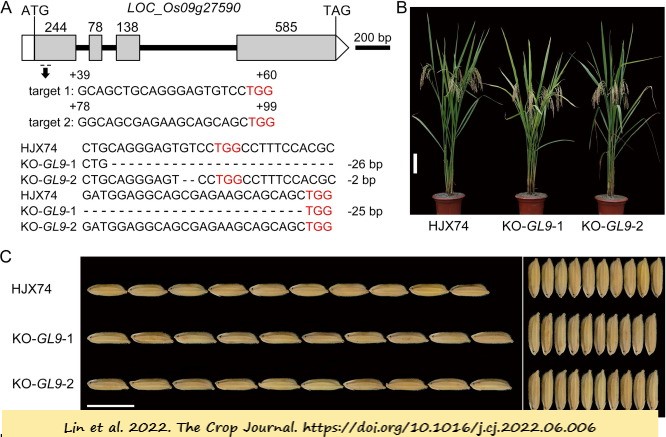 Rice (Oryza sativa L.) plays an indispensable role in world food security. Rice yield is an extraordinarily complex agronomic trait, controlled by multiple genes. Improving the grain yield of rice and enhancing its appearance are important objectives. Advances in genetics and breeding have modernized rice cultivation, leading to improvements in grain weight, an important determinant of both grain yield and appearance quality in rice. A group of researchers from China, led by Shaokui Wang at the State Key Laboratory for Conservation and Utilization of Subtropical Agro-Bioresources, South China Agricultural University, Guangzhou, have identified a gene variant in wild rice (Oryza glumaepatula) that controls the length, width, and chalkiness of rice grains. The introduction of this variant, called gl9, could help in breeding of new rice varieties with high grain yields and a desirable appearance.
Rice (Oryza sativa L.) plays an indispensable role in world food security. Rice yield is an extraordinarily complex agronomic trait, controlled by multiple genes. Improving the grain yield of rice and enhancing its appearance are important objectives. Advances in genetics and breeding have modernized rice cultivation, leading to improvements in grain weight, an important determinant of both grain yield and appearance quality in rice. A group of researchers from China, led by Shaokui Wang at the State Key Laboratory for Conservation and Utilization of Subtropical Agro-Bioresources, South China Agricultural University, Guangzhou, have identified a gene variant in wild rice (Oryza glumaepatula) that controls the length, width, and chalkiness of rice grains. The introduction of this variant, called gl9, could help in breeding of new rice varieties with high grain yields and a desirable appearance.
Shaokui Wang explains: “several wild rice varieties have good genetic resources that would be beneficial in the rice varieties we consume. But these can often not be incorporated because wild rice species are quite different from the cultivated ones. One aim of our study was essentially to bridge this gap and reap the benefits of favourable traits from wild rice.” Additional rice breeding by design demonstrated that the combination of gl9 with genes previously in use could further enhance the appearance quality and yield of rice grains.
Access the full paper at https://www.sciencedirect.com/science/article/pii/S2214514122001544?via%3Dihub
2. Scientists unlock the code to breed better peas
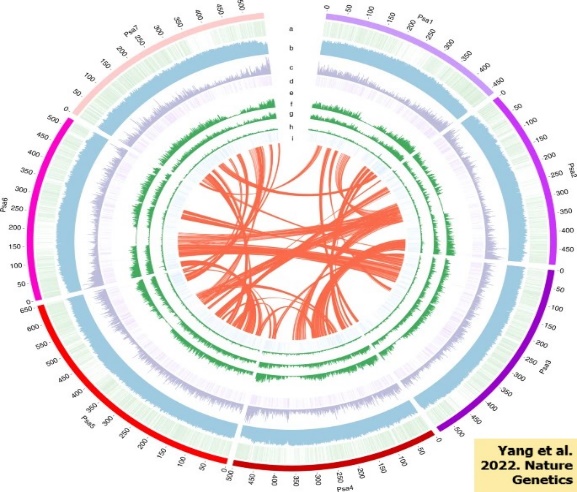 Pea (Pisum sativum L.) is an important crop in many countries, owing to its adaptability and reliable yield across a range of environments and soil types. It is a source of protein, carbohydrates, fibre, and minerals; it is also a valuable crop for rotation due to its ability to improve the soil through nitrogen fixation, thus reducing the need for chemical fertilizers. An international team of researchers, led by Tao Yang at the Institute of Crop Sciences, Chinese Academy of Agricultural Sciences, Beijing, China, has discovered exactly how peas have evolved and revealed the traits breeders can leverage to make them even better.
Pea (Pisum sativum L.) is an important crop in many countries, owing to its adaptability and reliable yield across a range of environments and soil types. It is a source of protein, carbohydrates, fibre, and minerals; it is also a valuable crop for rotation due to its ability to improve the soil through nitrogen fixation, thus reducing the need for chemical fertilizers. An international team of researchers, led by Tao Yang at the Institute of Crop Sciences, Chinese Academy of Agricultural Sciences, Beijing, China, has discovered exactly how peas have evolved and revealed the traits breeders can leverage to make them even better.
“In recent decades, next-generation sequencing technology has greatly facilitated the study of crop genomics, which has helped to better understand the architecture of the genome,” explains Professor Rajeev Varshney, one of the leaders of the project The researchers have elaborated on the genetic structure and variation of pea and its evolution to this point in time, and thus laid the groundwork for improving it. The team constructed a pan-genome of 116 pea accessions and pan-genes preferred in two wild relatives of a pea, P. abyssinicum and P. fulvum, showing distinct functional enrichment, indicating their potential value as breeding resources in the future. The study provides a deeper understanding of pea genes, which can play a role in adaptation to climate change and help in developing more climate-resilient peas.
For more, see https://phys.org/news/2022-09-scientists-code-peas.html?utm_source=nwletter&utm_medium=email&utm_campaign=daily-nwletter
Access the full paper at https://www.nature.com/articles/s41588-022-01172-2
3. Research reveals a new genome within the tomato family

Tomato is the world’s most important vegetable crop. Hidden beneath the delicate, red skin and juicy flesh of a tomato are a wealth of nutrients and genetic makeup. The tomato family, Solanaceae, is a model clade for a wide range of applied and basic research questions. Put simply, a genome is a complete set of DNA (genetic material) in a plant. The genome contains all the information needed for a plant to develop and grow. Reference-quality genomes are available for over 30 species from seven genera, and these include numerous crops as well as wild species. Researchers led by Stacey Smith at the University of Colorado, Boulder, USA, present the genome of the showy-flowered Andean shrub, Iochroma cyaneum M. L. Green, a woody lineage from the tomatillo subfamily, Physalideae.
Powell et al. 2022. In Volume15, Issue3
September 2022
e20223
The assembled size of the genome is more similar in size to pepper (Capsicum annum) than to other sequenced diploid members of the berry clade of Solanaceae (e.g., potato, tomato). The I. cyaneum genome constructed by the researchers contributes to a growing wealth of genomic resources of Solanaceae and emphasizes the need for an expanded sampling of diverse berry genomes to dissect major morphological transitions.
For more, see https://www.hortidaily.com/article/9454514/research-reveils-new-genome-within-the-tomato-family/
Access the full paper at https://acsess.onlinelibrary.wiley.com/doi/10.1002/tpg2.20223
4. Tropical soils are extremely sensitive to global warming, warn researchers
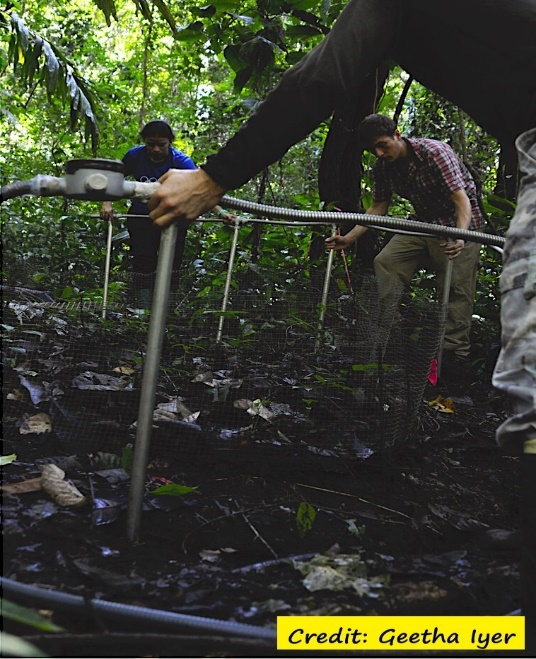 New research has found that global warming can lead to a decline in the number of microbial species that inhabit tropical soils, threatening rainforest biodiversity and potentially increasing carbon emissions. About one-third of the carbon stored in soil is held in tropical soils, which support about two-thirds of the world’s plant biomass. In an experiment on the island of Barro Colorado in Panama, an international team of researchers, led by Andrew Nottingham of the University of Leeds, investigated what happens when tropical soils are exposed to the global warming predicted by climate models. Researchers say that if the results obtained in just two years are representative, then soils will be harmed on a global scale, along with the rich ecosystems that support them.
New research has found that global warming can lead to a decline in the number of microbial species that inhabit tropical soils, threatening rainforest biodiversity and potentially increasing carbon emissions. About one-third of the carbon stored in soil is held in tropical soils, which support about two-thirds of the world’s plant biomass. In an experiment on the island of Barro Colorado in Panama, an international team of researchers, led by Andrew Nottingham of the University of Leeds, investigated what happens when tropical soils are exposed to the global warming predicted by climate models. Researchers say that if the results obtained in just two years are representative, then soils will be harmed on a global scale, along with the rich ecosystems that support them.
Microbial diversity has been found to correlate with soil health, so the question is whether any of the microbes missing in the heated plots play a significant role in soil function. Researchers observed that the microbial community composition shifted with soil warming, as many taxa could no longer be detected while others were enriched, including thermophilic taxa. There are other effects on plants in tropical rainforests, as they involve the association and symbiosis of microorganisms in the soil with vegetation. Therefore, changes in microbial communities are likely to be accompanied by changes in plant communities above ground. Researchers are interested in how plants respond to warming from above and, most importantly, changes in plant communities. Results suggest that the warming of tropical forests will have rapid, detrimental consequences both for soil microbial biodiversity and future climate.
Access the abstract at https://www.nature.com/articles/s41564-022-01200-1
5. Tillage intensity and plant rhizosphere selection shape bacterial-archaeal assemblage diversity and nitrogen cycling genes
Scientists have long known that no-till reduces erosion and water and nutrient runoff from fields 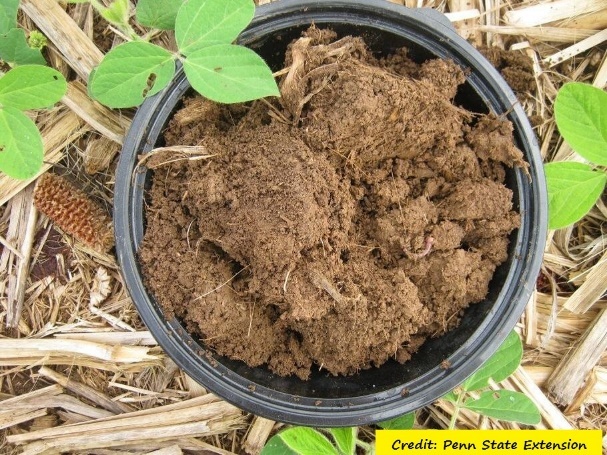 , thus reducing soil erosion, slowing oxidation and loss of soil organic matter, and promoting soil carbon accrual. A new study by a team of Penn State researchers, led by Mary Ann Bruns of the Department of Ecosystem Science and Management, suggests that limiting soil disturbance can also reduce nitrous oxide emissions. NO2 is a greenhouse gas that contributes to climate change, which is 300 times more powerful/damaging than carbon dioxide.
, thus reducing soil erosion, slowing oxidation and loss of soil organic matter, and promoting soil carbon accrual. A new study by a team of Penn State researchers, led by Mary Ann Bruns of the Department of Ecosystem Science and Management, suggests that limiting soil disturbance can also reduce nitrous oxide emissions. NO2 is a greenhouse gas that contributes to climate change, which is 300 times more powerful/damaging than carbon dioxide.
To find out how no-tillage affects soil microbes that both produce and break down nitric oxide, the researchers focused on a 40-year-old tillage experiment. Compared to other cultivation methods, no-tillage fields contained fewer marker genes for some nitroxide-producing bacteria, but no differences for nitroxide-degrading bacteria, suggesting that no-tillage may produce and release less nitrous oxide gas. Bruns, who is a member of the American Academy of Microbiology’s National Task Force on Microbes and Climate Change, explained that the research could help reduce nitrous oxide emissions. The no-till crops used in this experiment contained more soil organic carbon, says Cloutier, the lead author of the study.
Access the full paper at https://www.biorxiv.org/content/10.1101/2021.07.16.452714v1.full
6. Insights into two rare types of photosynthesis could boost crop production
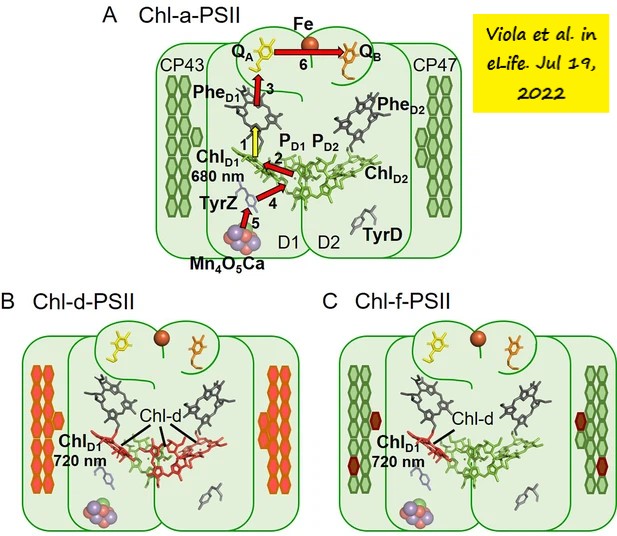 Organisms such as algae, plants, and cyanobacteria meet their energy needs through the photosynthesis process, using sunlight, water, and carbon dioxide to create oxygen and sugars, with the help of chlorophyll-a. The energy contained in visible light is used to perform the complex chemical reaction of extracting electrons from water. It has long been considered the minimum amount of energy required. Some cyanobacteria use low-energy far-red light, instead of visible light, for photosynthesis. A research team, led by Stefania Viola at the Imperial College, London, UK, studied cyanobacteria that use far-red light instead of visible light [referred to as Photosystem II (PSII)] for photosynthesis
Organisms such as algae, plants, and cyanobacteria meet their energy needs through the photosynthesis process, using sunlight, water, and carbon dioxide to create oxygen and sugars, with the help of chlorophyll-a. The energy contained in visible light is used to perform the complex chemical reaction of extracting electrons from water. It has long been considered the minimum amount of energy required. Some cyanobacteria use low-energy far-red light, instead of visible light, for photosynthesis. A research team, led by Stefania Viola at the Imperial College, London, UK, studied cyanobacteria that use far-red light instead of visible light [referred to as Photosystem II (PSII)] for photosynthesis
Acaryochloris marina lives in places protected from visible light but is exposed to stable far-red light, which it collects using the pigment chlorophyll-d instead of chlorophyll-a. Another recently discovered cyanobacterium (Chroococcidiopsis thermos) can use chlorophyll-a for photosynthesis in the presence of visible light and then switch to the pigment chlorophyll-f, using far-red light when visible light is blocked. Researchers found that cyanobacterial photosystem II, which uses the pigment chlorophyll-f, collects, and uses far-red light more than photosystem II, which uses chlorophyll-d shown to be less efficient, but better protects against harmful side effects of too much light, a trade-off between efficiency and resilience in systems that can use photosystem II. Scientists have studied how certain bacteria conduct photosynthesis using low-energy light, which could be manipulated by crops to increase production.
Access the full paper at https://elifesciences.org/articles/79890
7. Signalling molecules may regulate proteins in wheat plants
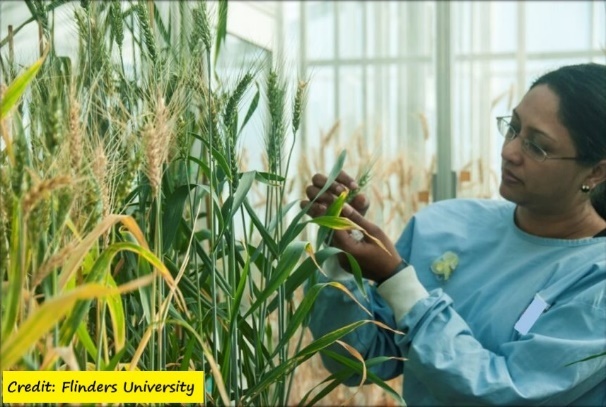 It is known that crop growth is controlled by complex triggers, governed by genes. South Australian plant scientists are investigating one of the ways wheat responds to common stresses, such as poor soil health. Research led by Sunita Ramesh of Flinders University, Bedford Park, Australia, is aiming to understand how a signalling molecule, known as gamma-aminobutyric acid (GABA), may regulate proteins in wheat plants dealing with a range of extremes. “This emerging research suggests that GABA is a signal in plants, not only regulating numerous normal developmental processes such as root growth, stomatal aperture and pollen tube germination, but also responses to stresses such as aluminium toxicity and salinity,” says Sunita Ramesh.
It is known that crop growth is controlled by complex triggers, governed by genes. South Australian plant scientists are investigating one of the ways wheat responds to common stresses, such as poor soil health. Research led by Sunita Ramesh of Flinders University, Bedford Park, Australia, is aiming to understand how a signalling molecule, known as gamma-aminobutyric acid (GABA), may regulate proteins in wheat plants dealing with a range of extremes. “This emerging research suggests that GABA is a signal in plants, not only regulating numerous normal developmental processes such as root growth, stomatal aperture and pollen tube germination, but also responses to stresses such as aluminium toxicity and salinity,” says Sunita Ramesh.
Previous studies have shown that in response to stress, GABA regulates the activity of ion transport proteins and in turn, under certain conditions, these proteins may transport GABA in plants. It is important to distinguish between the two types of transport of these proteins, to understand the role of GABA in stress tolerance. Using an aluminium-tolerant wheat variety, researchers evaluated a plant-derived pharmacological agent, picrotoxin, to distinguish the transport capacity of proteins involved in aluminium tolerance, such as extreme temperatures, salinity, aluminium toxicity in acidic soils, and even drought. These results imply that picrotoxin inhibits anion flux but not GABA flux, and hence it can be used to understand further the mechanism of GABA regulation of plant proteins.
For more, see https://phys.org/news/2022-09-molecule-proteins-wheat.html?utm_source=nwletter&utm_medium=email&utm_campaign=daily-nwletter
Access the full paper at https://www.mdpi.com/2079-7737/11/8/1162
Potential Crops/Technologies/Concepts
1. The long, leguminous quest to give crops nitrogen superpowers
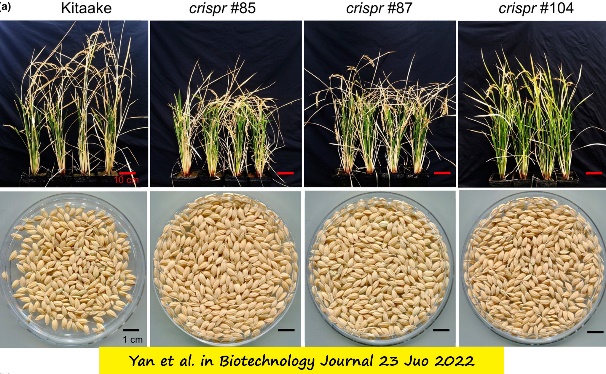 If crops could feel envy, it would be for legumes. Bean plants have a superpower: they have symbiotic relationships with bacteria that process atmospheric nitrogen into a form that is usable by them—an essential element for building their tissues, photosynthesizing and staying healthy. Cereal grasses use nitrogen that is already in the soil. One theory is that the symbiotic nitrogen relationship began long ago as a bacterial infection, and those ancestors had advantages that were passed on to future generations. Although it is less efficient for plants to obtain organic nitrogen from bacteria already present in the soil, it is also cheaper because symbiotic bacteria are in high demand. Improving biological nitrogen fixation (BNF) in cereals is a long-awaited goal yet to yield results.
If crops could feel envy, it would be for legumes. Bean plants have a superpower: they have symbiotic relationships with bacteria that process atmospheric nitrogen into a form that is usable by them—an essential element for building their tissues, photosynthesizing and staying healthy. Cereal grasses use nitrogen that is already in the soil. One theory is that the symbiotic nitrogen relationship began long ago as a bacterial infection, and those ancestors had advantages that were passed on to future generations. Although it is less efficient for plants to obtain organic nitrogen from bacteria already present in the soil, it is also cheaper because symbiotic bacteria are in high demand. Improving biological nitrogen fixation (BNF) in cereals is a long-awaited goal yet to yield results.
Eduardo Blumwald and colleagues at the University of California, Davis, USA, modified rice to stimulate the biofilm formation of diazotrophic soil bacteria, promote bacterial colonization of plant tissues, and increase the production of compounds that improve BNF, thereby increasing soil nitrogen concentration. They described a novel approach to increase grain yield by limiting soil N content. The researchers used a chemical screen to identify plant-derived compounds that induced biofilm formation in nitrogen-fixing bacteria and showed that apigenin and other flavones induced BNF. They then used CRISPR-based gene editing to target apigenin degradation in rice, enhancing plant apigenin levels and increasing root apigenin secretion, thus improving rice for increased grain yield when grown under limited soil nitrogen conditions. The results indicate that the manipulation of flavone biosynthetic pathways is a viable strategy to stimulate BNF in cereals and reduce the use of inorganic nitrogen fertilizers.
Access the full paper at https://www.ncbi.nlm.nih.gov/pmc/articles/PMC6095057/
2. African crops provide a nutrient-dense, gluten-free solution
 The world is producing more food than ever before, yet millions of Africans still lack proper nutrition. It is known that as alternatives to maize and rice, the focus needs to shift to developing nutrient-dense, gluten-free crackers, as envisaged by the EU-funded InnoFoodAfrica project. It is well recognized that African crops have unique taste profiles, especially the beany flavour and bitterness of cowpea and Bambara nut, which may not be acceptable to all consumers. Additionally, the grainy and sandy structure, especially in sorghum, has inhibited its large-scale use in food products. Researchers in the project studied how replacing maize with African crops affected the baking performance and technological properties of the crackers.
The world is producing more food than ever before, yet millions of Africans still lack proper nutrition. It is known that as alternatives to maize and rice, the focus needs to shift to developing nutrient-dense, gluten-free crackers, as envisaged by the EU-funded InnoFoodAfrica project. It is well recognized that African crops have unique taste profiles, especially the beany flavour and bitterness of cowpea and Bambara nut, which may not be acceptable to all consumers. Additionally, the grainy and sandy structure, especially in sorghum, has inhibited its large-scale use in food products. Researchers in the project studied how replacing maize with African crops affected the baking performance and technological properties of the crackers.
A total of 15 different crackers were baked using amaranth, sorghum, teff, Bambara groundnut, and cowpea flour in place of maize flour. A well-balanced process and combination of raw materials for making crackers could be achieved after many attempts. The nutritional composition improved in all the crackers made from African crops; in terms of technological change, the crackers changed from yellow to golden brown colour when the African crops were used. The modifications made to the raw materials changed the sensory profiles of sorghum and cowpea. The grainy structure of sorghum was significantly decreased by milling and air-fractionation. Germination decreased the intensity of beany flavour in cowpea samples. Germination also gave the crackers a more sweet, oily, and roasted flavour. In addition to developing solutions for agricultural practices and methods for processing and product development, InnoFoodAfrica also explores the potential of bio-packaging, to both reduce agricultural waste and enhance the potential for the production and use of African crops.
3. Crops of the future: Carlsberg invents ultra-fast breeding tech to develop crops
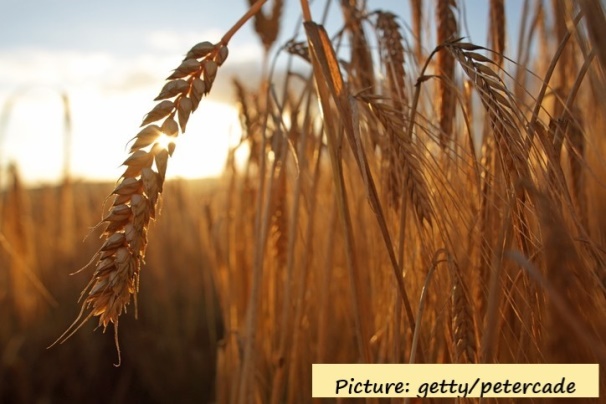 With rising temperatures and projections that crop yield growth rates will not be able to meet the demand for food of 9-10 billion people by 2050, there is an urgent need to find ways to sustainably optimize crops. Søren Knudsen and colleagues at the Carlsberg Research Laboratory, Copenhagen, Denmark—which has so far been primarily devoted to plant breeding and final dynamics for its brewery production—have developed a new resource for crop and microbe improvement, designated FIND-IT (Fast Identification of Nucleotide variants by droplet DigITal PCR). FIND-IT provides extremely fast identification and isolation of predetermined, targeted genetic variants in a screening cycle of fewer than 10 days. It enables the ultra-rapid modification of microorganisms, as well as a variety of plant species such as cereals. In addition, FIND-IT accelerates the development process from lab to field evaluation to product development, and has vast potential for sustainable agriculture beyond the brewing world,” the Lab says.
With rising temperatures and projections that crop yield growth rates will not be able to meet the demand for food of 9-10 billion people by 2050, there is an urgent need to find ways to sustainably optimize crops. Søren Knudsen and colleagues at the Carlsberg Research Laboratory, Copenhagen, Denmark—which has so far been primarily devoted to plant breeding and final dynamics for its brewery production—have developed a new resource for crop and microbe improvement, designated FIND-IT (Fast Identification of Nucleotide variants by droplet DigITal PCR). FIND-IT provides extremely fast identification and isolation of predetermined, targeted genetic variants in a screening cycle of fewer than 10 days. It enables the ultra-rapid modification of microorganisms, as well as a variety of plant species such as cereals. In addition, FIND-IT accelerates the development process from lab to field evaluation to product development, and has vast potential for sustainable agriculture beyond the brewing world,” the Lab says.
In contrast to transgenesis and CRISPR-Cas9 technologies, the insertion of complete genes, gene replacement, or the alteration of sections of genomes is not used with FIND-IT, and it overcomes technical drawbacks and uncertainties that have so far precluded their widespread application in commercial plant breeding. Carlsberg researchers screened variant libraries of more than 500,000 barley individuals and isolated more than 125 targeted barley gene knockout lines and miRNA or promoter variants, which helped conduct functional gene analysis. FIND-IT opens new opportunities for crop improvement by providing a means to develop crop plants that have superior drought tolerance, water tolerance, disease resistance, and mineral-use efficiency, including perennials or wild crop relatives, note the authors.
Access the full paper at https://www.science.org/doi/10.1126/sciadv.abq2266
4. Drones to aid in plant breeding and early detection of crop diseases
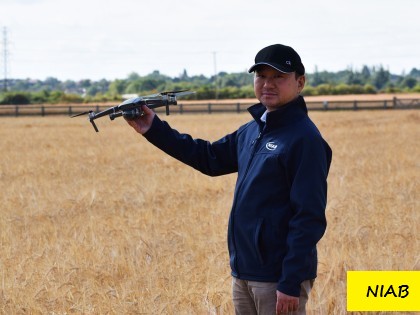 Drones are being increasingly employed in agricultural production. Over the last decade, agriculture research has become more advanced—in large part because of unmanned aerial vehicles, otherwise known as drones. Drones are being integrated into a variety of research activities and are becoming the most influential in agricultural research.
Drones are being increasingly employed in agricultural production. Over the last decade, agriculture research has become more advanced—in large part because of unmanned aerial vehicles, otherwise known as drones. Drones are being integrated into a variety of research activities and are becoming the most influential in agricultural research.
The National Institute of Agricultural Botany (NIAB), Cambridge, UK, and its Chinese partners, led by Bin Han and Ji Zhou at the Chinese Academy of Sciences, Shanghai, China, have linked, for the first time, drone-assisted aerial multi-seasonal phenotypes of plants to agricultural performance dynamics associated with credible DNA markers. This makes it easier for plant breeders and researchers to select plants and discover genes based on marker patterns and desirable traits. The drone has enormous potential in plant breeding and plant research, as it enables easy and inexpensive collection of visual 2D/3D information on plants in field trials. This open-source platform is a valuable resource to help crop researchers acquire high-quality phenotypic data at scale and develop new markers for crop improvement. The focus is on capturing key agronomic traits, such as yield factors. “This will drive innovation in crop characterization and plant breeding, leading to more resilient crops that farmers can grow and help address global climate challenges,” concluded Professor Zhou.
In another example of drone use, Maitiniyazi Maimaitijiang at South Dakota University, USA, is working jointly with other faculty members on crop health, diseases, and other aspects, with a focus on data collection. “Drone technology can be used to automatically determine growth conditions, canopy height, plant health and disease levels, nutrient and water stress levels, and predict final yield” said Maimaitijiang. Efforts are ongoing to develop robust, rapid, accurate and operational solutions and tools to detect and diagnose crop water stress, nutrient deficiency, and crop health and diseases—especially early detection and new algorithms to detect diseases and other stresses in advance before the symptoms become visible.
For more, see https://www.hortidaily.com/article/9453637/uk-drones-proven-to-aid-plant-breeding-in-identifying-valuable-new-crop-traits/
And
Access the full paper (on drones in plant breeding) at https://nph.onlinelibrary.wiley.com/doi/full/10.1111/nph.18314
5. A new way to produce pheromones as a crop pest repellent
 Most pesticides kill pests that eat plants, as well as beneficial insects, such as pollinators. One safer option that has been tried (and used on small scale) is the use of pheromones (chemicals produced by insects to attract mates for reproduction). Flooding the area with artificially produced chemicals confuses the insects and prevents them from mating. However, large-scale production of pheromones is expensive. So, a group of researchers from Sweden, Brazil, China, and the USA have tried to produce pheromones as crop pest control agents with a much cheaper method.
Most pesticides kill pests that eat plants, as well as beneficial insects, such as pollinators. One safer option that has been tried (and used on small scale) is the use of pheromones (chemicals produced by insects to attract mates for reproduction). Flooding the area with artificially produced chemicals confuses the insects and prevents them from mating. However, large-scale production of pheromones is expensive. So, a group of researchers from Sweden, Brazil, China, and the USA have tried to produce pheromones as crop pest control agents with a much cheaper method.
The team not only re-examined the use of pheromones to control insect pests but also genetically modified (GM) the plant Camelina sativa, an oil plant, to force it to produce a pheromone that could be used as a pest control agent. Through this innovative effort, Wang and colleagues demonstrated that biotechnology may be a costly tool, but a very useful one. They conducted field trials with GM camellia to show that it works well in the field. The field trials proved to be successful and quite profitable. They assessed two formulations of these plant-derived volatile signals for their ability to alter the behaviour of male moth pests in the field. Demonstrations in China and Brazil confirmed the promise of this approach. The amount of raw material required is not large, and the material can be grown under regulations that do not require expensive full approval of the transgenic crop (in countries where such regulations exist). This study also confirms the wider potential of this green manufacturing approach, and it would be easy to use analogous strategies to synthesize others to target several insect pests.
Access the full paper at (1) https://www.nature.com/articles/s41893-022-00949-x
Access the full paper at (2) https://www.nature.com/articles/s41893-022-00949-x
6. The same yield with less water and minimal fertilizer use
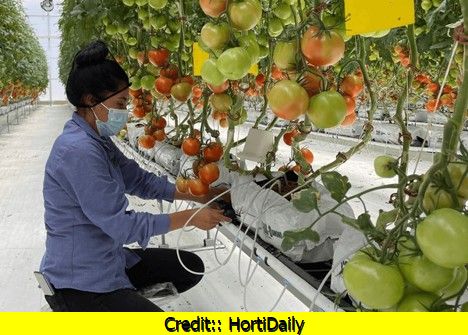 With the Internet of Things (IoT), coupled with artificial intelligence (AI) and other tools, agriculture is slowly moving towards being a precise ‘culture,’ at least in more developed countries and under-protected farming. As water and plant nutrition are crucial to productive agriculture, and with an increasing need for being able to sustainably produce under limited conditions with less water and little chemical fertilizers, several applications (APPS) and requisite tools and equipment are being developed for the judicious management of irrigation and application of fertilizers (for example see https://www.agriculture.com/technology/mobile/farmers-favorite-phone-apps and https://krishijagran.com/agripedia/top-10-agricultural-mobile-apps-for-farmers-in-2021/). To manage irrigation and fertilization, 30MHz (an enterprise based in the Netherlands) has developed the Irrigation Management App (IMA), with the potential for growing crops with less water and minimal fertilizer.
With the Internet of Things (IoT), coupled with artificial intelligence (AI) and other tools, agriculture is slowly moving towards being a precise ‘culture,’ at least in more developed countries and under-protected farming. As water and plant nutrition are crucial to productive agriculture, and with an increasing need for being able to sustainably produce under limited conditions with less water and little chemical fertilizers, several applications (APPS) and requisite tools and equipment are being developed for the judicious management of irrigation and application of fertilizers (for example see https://www.agriculture.com/technology/mobile/farmers-favorite-phone-apps and https://krishijagran.com/agripedia/top-10-agricultural-mobile-apps-for-farmers-in-2021/). To manage irrigation and fertilization, 30MHz (an enterprise based in the Netherlands) has developed the Irrigation Management App (IMA), with the potential for growing crops with less water and minimal fertilizer.
The 30 MHz Irrigation Control App gives every farmer the ability to control their irrigation and supports instinct with reliable information. Irrigation management application provides a complete and reliable overview of moisture management in a greenhouse, tunnel, or open field. The application is based on data input from a complete set of four easy-to-install compact wireless sensors. The irrigation management application collects data and allows you to view historical data at any time. The irrigation management application has shown in development tests that it can significantly reduce water consumption.
For more, see https://www.hortidaily.com/article/9459345/the-same-yield-with-less-water-and-fewer-fertilizers/
7. Making clothes from trees brings an unlikely win-win for food security and the environment
 Cotton needs a lot of water, chemicals, etc., which may be unsustainable in the coming decades. It covers 34.5 million hectares of arable farmland around the world. Now, a team of Swedish researchers, led by Anneli Adler at the Swedish University of Agricultural Sciences, Uppsala, propose that if a share of the cotton crop is replaced with fibres made from the wood of fast-growing poplar trees, we could free up millions of hectares of cotton land for growing food instead. The researchers claim that new breeds of poplar could produce enough fibre to replace much of Europe’s cotton cultivation, freeing up land for other uses.
Cotton needs a lot of water, chemicals, etc., which may be unsustainable in the coming decades. It covers 34.5 million hectares of arable farmland around the world. Now, a team of Swedish researchers, led by Anneli Adler at the Swedish University of Agricultural Sciences, Uppsala, propose that if a share of the cotton crop is replaced with fibres made from the wood of fast-growing poplar trees, we could free up millions of hectares of cotton land for growing food instead. The researchers claim that new breeds of poplar could produce enough fibre to replace much of Europe’s cotton cultivation, freeing up land for other uses.
“Fast-growing trees like poplars capture carbon dioxide quickly because they grow quickly and produce enough wood to cut in 20 years,” says Anneli Adler, a researcher at the Swedish Agricultural University who developed the poplar clones. Using the growth data of two poplar varieties, the researchers calculated that these trees could produce 2.4 tonnes of fibre mass per year in the Baltic Sea region. Poplar forests can thrive without the substantial amounts of fertilizers, chemicals, and water that cotton needs, which mitigates their environmental impact. Making clothes from trees can bring incredible benefits in terms of food security and the environment. This work highlights a new value chain that reduces the environmental footprint of textiles, chemicals, and biofuels by enabling the land acquisition and water conservation, from cotton to food production.
Access the full paper at https://www.cell.com/joule/fulltext/S2542-4351(22)00295-1?_returnURL=https%3A%2F%2Flinkinghub.elsevier.com%2Fretrieve%2Fpii%2FS2542435122002951%3Fshowall%3Dtrue
News:
1. Diet for a hotter climate: five plants that could help feed the world
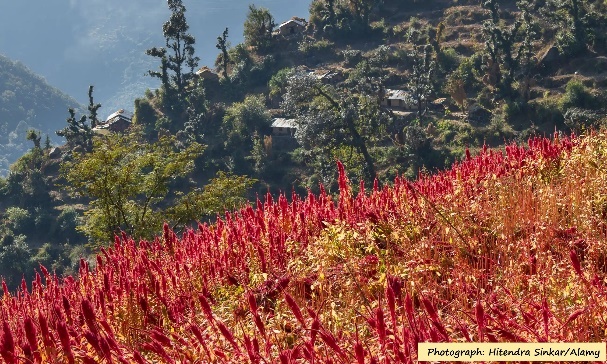 Although humans had used over 6,000 different plant species for food and other needs, it is well-recognized that we have gravitated toward planting just a few—those with the largest yields. Today, just three crops—rice, wheat, and corn—– provide nearly half of the world’s calories; reliance on such a small number of crops has made agriculture vulnerable to pests and other stresses, the latest being that from climate change. As the effects of the climate crisis deepen, farmers around the world are rediscovering old crops and developing new hybrids which can be more resistant to drought or epidemics, while still providing essential nutrients. Examples include fonio (white fonio, Digitaria exilis; black fonio, D. iburua)—an African grain, amaranth (several species: Amaranthus caudatus, A. cruentus, and A. hypochondriacus), capers (Capparis spinosa), taro (Colocasia esculenta), and kernza or intermediate wheatgrass (Thinopyrum intermedium).
Although humans had used over 6,000 different plant species for food and other needs, it is well-recognized that we have gravitated toward planting just a few—those with the largest yields. Today, just three crops—rice, wheat, and corn—– provide nearly half of the world’s calories; reliance on such a small number of crops has made agriculture vulnerable to pests and other stresses, the latest being that from climate change. As the effects of the climate crisis deepen, farmers around the world are rediscovering old crops and developing new hybrids which can be more resistant to drought or epidemics, while still providing essential nutrients. Examples include fonio (white fonio, Digitaria exilis; black fonio, D. iburua)—an African grain, amaranth (several species: Amaranthus caudatus, A. cruentus, and A. hypochondriacus), capers (Capparis spinosa), taro (Colocasia esculenta), and kernza or intermediate wheatgrass (Thinopyrum intermedium).
Most of these are not new crops and are still grown in pockets across the world. As the climate continues to change, there is a resurgence in their cultivation owing to their resistance to drought or flooding and their ability to grow in poor soils. Kernza is a crop bred for the climate crisis. While many alternative crops are simply plants that were grown elsewhere in the world generations ago, others have been bred specifically to resist climate change. As a perennial crop, this species is especially attractive for planning in grain-producing regions.
For more, see https://www.theguardian.com/environment/2022/aug/20/ancient-crops-climate-crisis-amaranth-fonio-cowpeas-taro-kernza?ref=refind
2. A new banana disease is spreading, threatening Africa’s food security

The Fusarium banana wilt (FBW) is spreading rapidly around the world. It hit Africa a decade ago, and it threatens the continent’s food security, according to a genetic study by Wageningen University and Research (WUR) and Utrecht University. Plant pathology professor Gert Kema and his colleagues sound the alarm. In Africa, Fusarium wilt is spreading in Mozambique, where the dominant TR4 strain is affecting several banana farmers. The disease continues to spread, including among small farmers and people growing banana plants in their gardens. The Fusarium fungus is well-known among banana growers. The new study, by Anouk van Westerhoven and colleagues and researchers at Seidl of Utrecht University, demonstrates that the TR4 has spread as far as at least 200 km from the original plantation and that the strains found in separate locations are closely related, indicating that the pathogen strains found in Mozambique have a single origin.
The spread of this disease to other African countries appears imminent, which threatens the food security of countries such as Tanzania, Malawi, Uganda, and Rwanda, where bananas are a staple food for millions of people. Efforts to develop wilt-resistant bananas are underway, but they still have a long way to go. Fernando Garcia- Bastidas, at the Laboratory of Plant Breeding, Wageningen University, Wageningen, The Netherlands, and colleagues, including African researchers, discovered how to trigger an immune response in Cavendish banana by using an avirulent Fusarium strain. The data support the hypothesis that activation of race 1 resistance in Cavendish bananas affects TR development and provides the first insight into gene expression in different Fusarium spp. and a banana. More research is required but understanding this phenomenon can contribute to future solutions.
Access the full paper at https://journals.plos.org/plospathogens/article?id=10.1371/journal.ppat.1010769
Access the abstract of paper 2 at https://apsjournals.apsnet.org/doi/10.1094/PDIS-07-22-1576-SC
Access the full paper 3 at https://journals.plos.org/plosone/article?id=10.1371/journal.pone.0273335
3. Barriers to engineering perennial, high-yield grain crops that are desirable
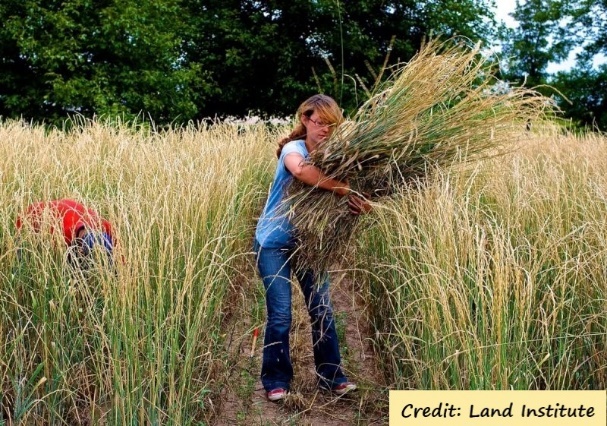 Perennial grain crops—those crops that you plant only once and harvest multiple times—would potentially deliver multiple benefits, including savings in seed and fuel costs, reduced cultivation costs, and lower input requirements. Some perennial crops could be grazed, as well as produce grain. They also contribute help to reducing carbon emissions. Creating a perennial grain crop is far from easy, however. There are two main methods of creating perennial crops: (1) domesticating perennial species that have desirable characteristics, such as consistently high seed yields, synchronous flowering, and seed maturation; and (2) crossing an existing annual grain crop with a wild perennial cousin and selecting a high-yielding perennial type with good agronomic traits. The biggest success, so far, has been with perennial rice, developed in conjunction with the University of Yunnan, says Lennart Olsson, a board member at the Land Institute and geography professor at Lund University in Sweden.
Perennial grain crops—those crops that you plant only once and harvest multiple times—would potentially deliver multiple benefits, including savings in seed and fuel costs, reduced cultivation costs, and lower input requirements. Some perennial crops could be grazed, as well as produce grain. They also contribute help to reducing carbon emissions. Creating a perennial grain crop is far from easy, however. There are two main methods of creating perennial crops: (1) domesticating perennial species that have desirable characteristics, such as consistently high seed yields, synchronous flowering, and seed maturation; and (2) crossing an existing annual grain crop with a wild perennial cousin and selecting a high-yielding perennial type with good agronomic traits. The biggest success, so far, has been with perennial rice, developed in conjunction with the University of Yunnan, says Lennart Olsson, a board member at the Land Institute and geography professor at Lund University in Sweden.
Washington State University’s Breadlab is developing short-lived perennial wheat, as well as speciality non-commodity coloured wheat grains, using what founder Stephen Jones calls the technique of “making domestic wheat more wild”. Impressive genetic gain has been made with Kernza (Thinopyrum intermedium). Breadlab is looking at promising lines. Another challenge is finding varieties that will thresh well: Kernza does not thresh freely, as it is a hulled grain. Professor Olsson is optimistic, though, about a perennial revolution.
For more, see https://www.fwi.co.uk/arable/other-crops/are-perennial-grain-crops-close-to-being-a-realistic-alternative and https://geneticliteracyproject.org/2022/09/13/what-are-the-barriers-to-engineering-perennial-high-yield-grain-crops/?utm_source=jeeng%20and%20https://www.fwi.co.uk/arable/other-crops/are-perennial-grain-crops-close-to-being-a-realistic-alternative
See a related paper at https://www.ncbi.nlm.nih.gov/pmc/articles/PMC9372509/pdf/fpls-13-898769.pdf
4. Farming and fertilizers: how ecological practices can be effective
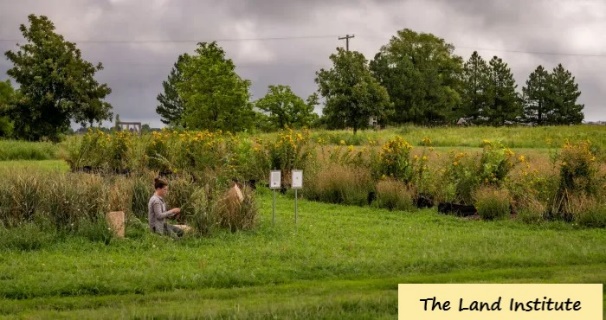 Agriculture requires a fine balance between food production and its impact on the environment. For example, fertilizers can help to achieve high yields, but frequent use and use of large amounts of chemical fertilizers increases greenhouse gas emissions and pollution. For sustainable agriculture, there is a need to minimize external inputs like fertilizers, and support crop growth through increasing ecological functioning within farms. This requires enhancing relationships between different on-farm organisms: crops, livestock, microbes, wild plants, etc.
Agriculture requires a fine balance between food production and its impact on the environment. For example, fertilizers can help to achieve high yields, but frequent use and use of large amounts of chemical fertilizers increases greenhouse gas emissions and pollution. For sustainable agriculture, there is a need to minimize external inputs like fertilizers, and support crop growth through increasing ecological functioning within farms. This requires enhancing relationships between different on-farm organisms: crops, livestock, microbes, wild plants, etc.
Using these relationships to support crop yields is called “ecological intensification.” Chloe MacLaren and colleagues at Rothamsted Research, Harpenden, UK, used 30 long-term experiments from Europe and Africa (comprising 25,565 yield records) to determine whether ecological intensification could reduce the need for two inputs: nitrogen fertilizer and cultivation. In general, they found that ecological intensification can help balance food production and environmental impacts by reducing the heavy use of fertilizers without reducing yields.
Ecological practices included crop diversification, crop rotation or planting different crops close together, including fertility-enhancing crops, such as forage or cover crops instead of staple food crops, organic matter management, such as using compost or manure to fertilize crops and using crop leftovers for nutrient cycling.
Access the abstract at https://www.nature.com/articles/s41893-022-00911-x
5. Non-invasive technology to aid global food security
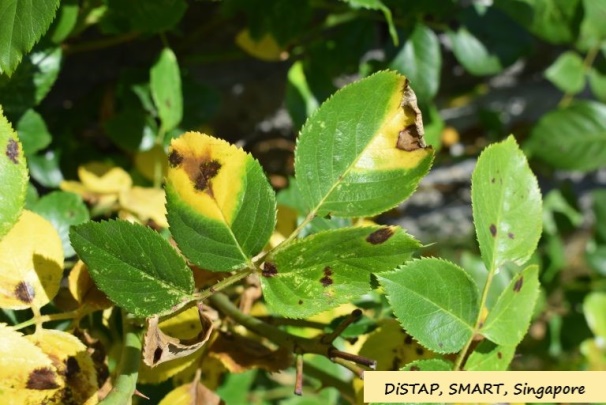 Transgenic plants containing genetically encoded biosensors are ideal for studying the dynamics of different signalling molecules in model plant species, such as watercress (Arabidopsis thaliana), which are sensitive to genetic modification in a laboratory environment. Non-destructive sensors enable effective monitoring of plant health, using plant physiological events, without the need for leaf sampling or cutting. Optical nanosensors, such as single-walled carbon nanotubes, are an attractive strategy for detecting plant hormones and signalling molecules in living plants.
Transgenic plants containing genetically encoded biosensors are ideal for studying the dynamics of different signalling molecules in model plant species, such as watercress (Arabidopsis thaliana), which are sensitive to genetic modification in a laboratory environment. Non-destructive sensors enable effective monitoring of plant health, using plant physiological events, without the need for leaf sampling or cutting. Optical nanosensors, such as single-walled carbon nanotubes, are an attractive strategy for detecting plant hormones and signalling molecules in living plants.
The Disruptive and Sustainable Technologies for Agricultural Precision (DiSTAP), one of the Singapore-MIT Alliance for Research and Technology (SMART) interdisciplinary research groups, led by Gajendra Pratap Singh, has developed a plant nanosensor that can selectively detect stress-induced hydrogen peroxide signalling waves in different plant species—such as lettuce, arugula, spinach, strawberry thistle, Swiss chard, and thale cress—using the portable Raman system for measuring plant metabolites. Plant diseases seriously affect crops worldwide, and the use of non-destructive sensors to monitor plant health is a sustainable and attractive strategy to improve crop quality.
For more, see https://www.newfoodmagazine.com/article/167347/non-invasive-technology-to-aid-global-food-security/
Access the related paper at https://www.frontiersin.org/articles/10.3389/fpls.2021.746586/full
6. ‘Blueprint’ for photosynthesis revealed
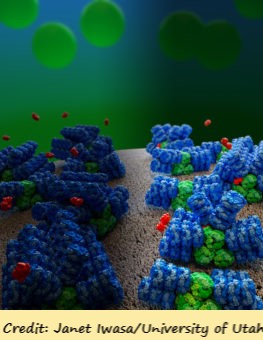
We noted earlier (see item 6 under Research Results) that there are different kinds of photosynthesis and that cyanobacteria can continue the process under shaded conditions. Cyanobacteria are the descendants of the first organisms on Earth capable of taking sunlight, water, and carbon dioxide and turning them into sugars and oxygen, and these organisms contributed this ability to green plants. María Agustina Domínguez-Martín and colleagues at the University of Berkeley, USA, studied the photosynthesis in cyanobacteria, and their results shed new light on microbial photosynthesis—specifically how light energy is captured and sent to where it is needed to power the conversion of CO2 into sugars.
These insights could help researchers to redress damaging algal blooms, develop artificial photosynthesis systems for use in renewable energy generation, and use microbes in sustainable manufacturing that uses CO2 as the raw material and sunlight. It may be possible to use cyanobacteria as solar factories that harvest sunlight, and then convert it into a form of energy that can be used to make important products, says Cheryl Kerfeld, a co-author. In addition to the answers and potential applications this work provides, researchers are also excited by the new questions this work raises and the research that it can inspire.
For more, see https://newscenter.lbl.gov/2022/09/01/research-team-reveals-a-blueprint-for-photosynthesis/ Access the abstract at https://www.nature.com/articles/s41586-022-05156-4
Events (June 2023):
ICSAFAB 2023: International Conference on Soil, Agriculture, Food and Agricultural Biotechnology

05-06 June 2023, New York, United States
For more, see
ICEA 2023: International Conference on Extensive Agriculture

15-16 June 2023, Venice, Italy
For more, see https://waset.org/extensive-agriculture-conference-in-june-2023-in-venice
ICAAB 2023: International Conference on Agriculture and Agricultural Biotechnology

19-20 June 2023, Barcelona, Spain
For more, see https://waset.org/agriculture-and-agricultural-biotechnology-conference-in-june-2023-in-barcelona
ICABE 2023: International Conference on Agriculture, Biofuels and Environment

22-23 June 2023, London, United Kingdom
For more, see https://waset.org/agriculture-biofuels-and-environment-conference-in-june-2023-in-london
ICABS 2023: International Conference on Agriculture, Biodiversity and Sustainability

22-23 June 2023, Istanbul, Türkey
For more, see https://waset.org/agriculture-biodiversity-and-sustainability-conference-in-june-2023-in-istanbul
Other Topics of Interest
1.Fighting climate change with heat-tolerant plants
For more, see https://phys.org/news/2022-09-climate-heat-tolerant.html?utm_source=nwletter&utm_medium=email&utm_campaign=daily-nwletter
2. Weedy rice has become herbicide resistant through rapid evolution
Access the full paper at https://www.nature.com/articles/s42003-022-03803-0
3. In vitro propagation for conservation and genetic fidelity of the near-threatened Dimocarpus longan plant
For more, see https://pubmed.ncbi.nlm.nih.gov/36070156/ Access the full paper at https://jgeb.springeropen.com/articles/10.1186/s43141-022-00406-4
4. Plant resources threatened by pests and diseases
5. What it takes for plants to survive drought
For more, see https://msutoday.msu.edu/news/2022/what-it-takes-for-plants-to-survive-drought
6. A better understanding of crop yields under climate change
For more, see https://phys.org/news/2022-09-crop-yields-climate.html?utm_source=nwletter&utm_medium=email&utm_campaign=daily-nwletter
7. Keeping trees near farmland pays environmental dividends
For more, see https://phys.org/news/2022-09-trees-farmland-environmental-dividends.html
Access the abstract at https://onlinelibrary.wiley.com/doi/10.1111/gcb.16322
8. Fertilizer restrictions’ unintended consequences
For more, see https://dirt-to-dinner.com/fertilizer-restrictions-unintended-consequences/
9. Racing to the roots: soil moisture impacts the speed of nematodes
For more, see https://www.agronomy.org/news/science-news/racing-roots-soil-moisture-impacts-speed-nematodes/ and https://www.hortidaily.com/article/9459006/soil-moisture-impacts-the-speed-of-nematodes/
Access the abstract at https://acsess.onlinelibrary.wiley.com/doi/10.1002/agj2.21103
10. Multiple-source characteristics of crop water use strategy in hyper-arid regions
Access the full paper at https://www.sciencedirect.com/science/article/abs/pii/S0378377422003614?via%3Dihub
11. New research refines thrips colony management
For more, see https://blogs.ifas.ufl.edu/news/2022/09/12/new-research-refines-thrips-colony-management/
12. UCF Botanical Society to create enhanced peppers through plant breeding project
13. Soil microbiota can boost the growth of invasive plant species and provide defence against herbivores
Access the full paper at https://phys.org/news/2022-09-soil-microbiota-boost-growth-invasive.html?utm_source=nwletter&utm_medium=email&utm_campaign=daily-nwletter https://besjournals.onlinelibrary.wiley.com/doi/10.1111/1365-2745.13975
14. New survey finds young farmers are motivated by environmental conservation and social justice
15. Mirror image molecules reveal drought stress in forests
16. Agriculture drives more than 90% of tropical deforestation
Access the abstract at https://www.science.org/doi/10.1126/science.abm9267
17. Apple trees natural response to virus mirrors GM mechanism, study shows
For more, see https://www.manchester.ac.uk/discover/news/apple-trees-natural-response-to-virus-mirrors-gm-mechanism-study-shows/
18. The long and short of a supergene for efficient pollination
Access the full paper at https://www.cell.com/action/showPdf?pii=S0960-9822%2822%2901364-1
19. High plant diversity is often found in the smallest of areasFor more, see https://phys.org/news/2022-08-high-diversity-smallest-areas.html?utm_source=nwletter&utm_medium=email&utm_campaign=daily-nwletter
Access the full paper at https://www.nature.com/articles/s41467-022-32063-z
20. How can agriculture in India be improved by 2030
For more, see https://thecsrjournal.in/agriculture-india-improved-2030-wrms/
21. Key factors contributing to high local diversity of trees of Euphorbiaceae in Xishuangbanna
22. Potato breeding program targets French fry, chipping, fresh markets
23. Probing sustainable agrometeorological services and outcomes on agriculture in Laos
24. Researchers propose new framework for regulating engineered crops
For more, see https://www.sciencedaily.com/releases/2022/09/220901151556.htm
25. Crops grown together cooperate better in just two generations
For more, see https://phys.org/news/2022-09-crops-grown-cooperate.html?utm_source=nwletter&utm_medium=email&utm_campaign=daily-nwletter
26. Millions of farmers ‘replumb’ the world’s largest delta
27. Researchers identify virus resistance gene from wild grass for cereal crop improvement
28. Responses of seed traits to extreme drought imply strong relationships with drought sensitivity
29. A bitter mystery: Scientists sequence world’s oldest plant genome from 6,000-year-old watermelon seeds
Access the full paper at https://academic.oup.com/mbe/article/39/8/msac168/6652436?login=false
30. Countries growing 70% of world’s food face ‘extreme’ heat risk by 2045
31. APHIS issues first regulatory status review response: Norfolk Plant Sciences’ purple tomato
For more, see https://www.tsl.ac.uk/news/purple-gm-tomatoes-at-exciting-milestone-in-us and
https://www.aphis.usda.gov/aphis/newsroom/stakeholder-info/sa_by_date/sa-2022/purple-tomato and
32. Review of SERS-based sensors for agricultural applications
For more, see https://phys.org/news/2022-09-sers-based-sensors-agricultural-applications.html
Access the abstract at https://www.sciencedirect.com/science/article/abs/pii/S0924224422003016?via%3Dihub
33. Ferns finally get a genome, revealing a history of DNA hoarding and kleptomania
Access the full paper at https://www.nature.com/articles/s41477-022-01226-7#
34. Fruits and vegetables are less nutritious than they used to be
Access related papers at https://www.tandfonline.com/doi/full/10.1080/09637486.2021.1981831 and https://pubmed.ncbi.nlm.nih.gov/15637215/ and https://www.ncbi.nlm.nih.gov/pmc/articles/PMC8750575/ and https://www.science.org/doi/10.1126/sciadv.aaq1012
35. Making jackfruit jump off the shelves
For more, see https://phys.org/news/2022-09-jackfruit-shelves.html?utm_source=nwletter&utm_medium=email&utm_campaign=daily-nwletter
Access the book at https://www.agrifutures.com.au/wp-content/uploads/2022/01/21-153.pdf
36. The loneliest trees: can science save these threatened species from extinction?
For more, see the full paper at https://www.nature.com/articles/d41586-022-02765-x?utm_source=Nature+Briefing&utm_campaign=e8ae393668-briefing-dy-20220831&utm_m%E2%80%A6%202/12
37. Integrating agricultural diversification in China’s major policies
For more, see https://www.cell.com/trends/ecology-evolution/fulltext/S0169-5347(22)00165-3
38. Crops grown together cooperate better in just two generations
For more, see https://phys.org/news/2022-09-crops-grown-cooperate.html?utm_source=nwletter&utm_medium=email&utm_campaign=daily-nwletter
Access the abstract and download full paper at https://elifesciences.org/articles/77577
39. Nine actions to successfully restore tropical agroecosystems
For more, see https://www.cell.com/trends/ecology-evolution/fulltext/S0169-5347(22)00171-9
40. Revisiting the adequacy of the economic policy narrative underpinning the Green Revolution
Access the full paper at https://link.springer.com/article/10.1007/s10460-022-10325-2
41. Assessment framework for conservation and management of legume plants in coastal East Africa
Access the abstract at https://www.sciencedirect.com/science/article/abs/pii/S0254629922004525?via%3Dihub
42. Global food systems transitions have enabled affordable diets but had less favourable outcomes for nutrition, environmental health, inclusion, and equity
For more, see https://www.nature.com/articles/s43016-022-00588-7
43. Wild food foraging accounts for nearly 250,000cubic meters of produce consumed annually in Zambia
For more, see https://phys.org/news/2022-08-wild-food-foraging-accounts-cubic.html?utm_source=nwletter&utm_medium=email&utm_campaign=daily-nwletter Access the full paper at https://besjournals.onlinelibrary.wiley.com/doi/10.1002/pan3.10367
44. Newly identified genes may help protect crops against flooding
For more, see https://phys.org/news/2022-09-newly-genes-crops.html?utm_source=nwletter&utm_medium=email&utm_campaign=daily-nwletter Access the full paper at https://www.mdpi.com/2075-1729/12/7/1079
45. Research seeks ways to grow solar and crops together in the sceptical Corn Belt
For more, see https://thelensnola.org/2022/09/09/research-seeks-ways-to-grow-solar-and-crops-together-in-the-skeptical-corn-belt/
46. Research on world’s largest tree group will help conservation and management of rain forests
For more, see https://phys.org/news/2022-09-world-largest-tree-group-forests.html?utm_source=nwletter&utm_medium=email&utm_campaign=daily-nwletter Access the full paper at https://www.nature.com/articles/s41467-022-32637-x
47. Can wild potato relatives help tame zebra chip disease?
For more, see https://phys.org/news/2022-09-wild-potato-relatives-zebra-chip.html?utm_source=nwletter&utm_medium=email&utm_campaign=daily-nwletter Access the full paper at https://www.frontiersin.org/articles/10.3389/fmicb.2022.857493/full
48. ARS scientists transform an overlooked weed into a stunning Success
For more, see https://tellus.ars.usda.gov/stories/articles/hidden-in-plain-sight/
49. Plant breeding: Using ‘invisible’ chromosomes to pass on packages of positive traits
For more, see https://phys.org/news/2022-09-invisible-chromosomes-packages-positive-traits.html?utm_source=nwletter&utm_medium=email&utm_campaign=%E2%80%A6%201/3 and https://www.sciencedaily.com/releases/2022/09/220920100738.htm#:~:text=To%20ensure%20that%20positive%20traits,thus%20be%20passed%20on%20unchanged.
Access the abstract at https://www.nature.com/articles/s41477-022-01238-3
50. Genomes of wild tomatoes offer valuable resource for tomato improvement
Access the full paper at https://academic.oup.com/hr/article/doi/10.1093/hr/uhac139/6611680?login=false
